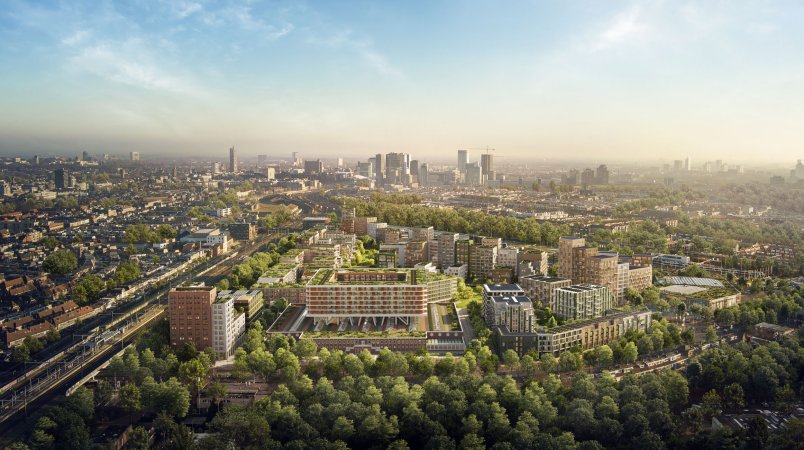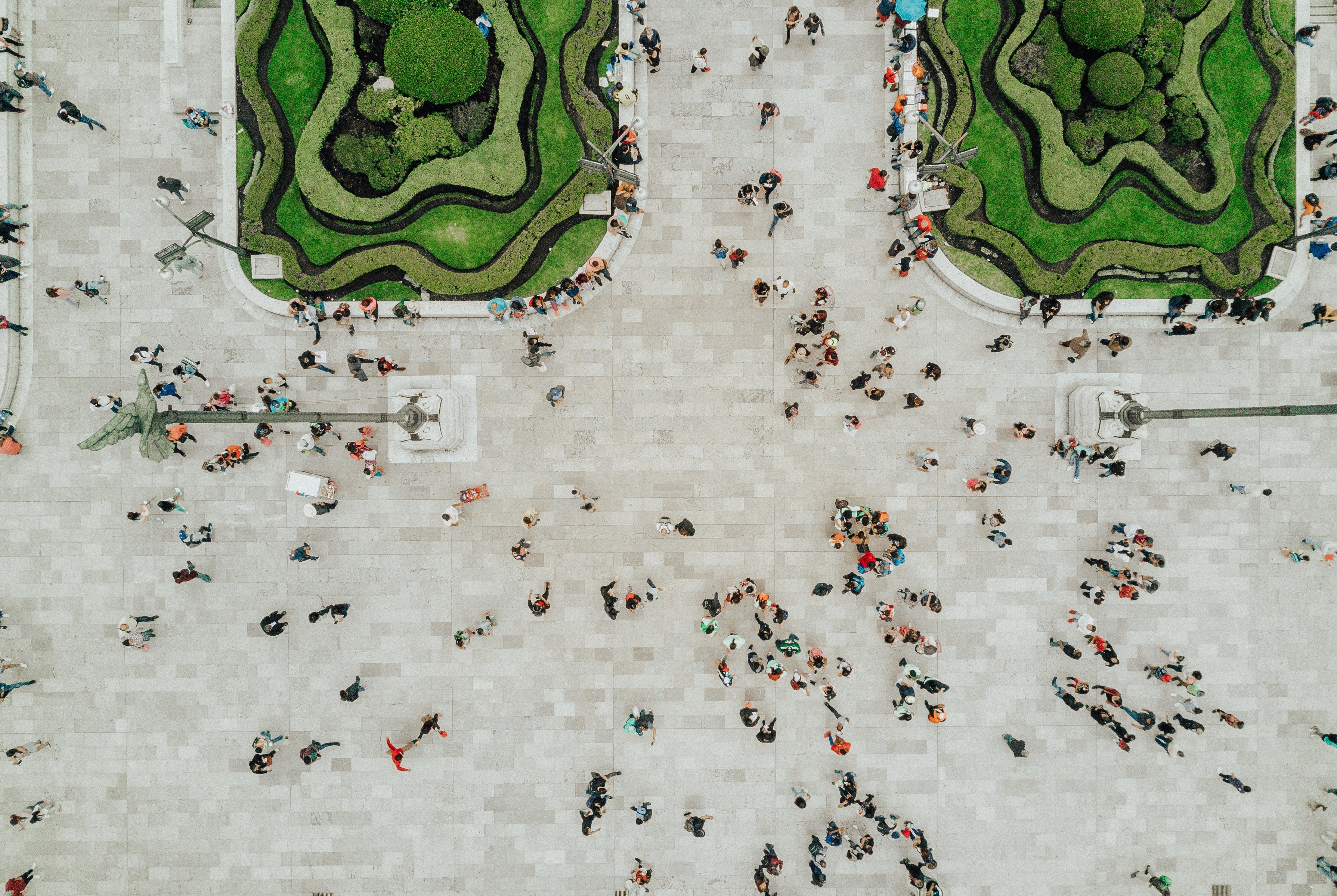Cartesius

Geographical area: Europe
Location: Utrecht, Netherlands
City size: Medium (between 250,000 and 1,000,000 inhabitants)
Promoter: Municipality of Utrecht and Dutch Railways
Developer: Blue District Consortium
Start year:
End-year:
Implementation phase: Implementation in progress
Project size: Neighborhood
Total area of intervention (in sqm): 130.000
Total investments (in USD): -
The Cartesius project is envisioned as the first urban Blue Zone in a Dutch city. The project aims to refurbish a brownfield in the city of Utrecht, spanning an area of around 130,000 sqm. The redevelopment project will take place on the old marshalling yard of the Dutch Railways (Nederlandse Spoorwegen), which was primarily used to repair buses. The main objective of the redevelopment is to build a sustainable and healthy neighborhood in the city, combining affordable residential buildings with public spaces and green areas, and providing urban services, i.e., a school, a supermarket and other facilities, and new and sustainable mobility solutions. The development of Cartesius is based on scientific evidence from Blue Zone studies, which identify areas where people live longer, healthier, and happier lives. The project started in 2017 with the opening of a public tender. The Municipality of Utrecht and Dutch Railways sold the development rights to the Blue District Consortium, composed of private developers who will implement the different phases of the project. The planning and design of the renovation project lasted from 2017 to 2020, during which the Municipality zoned the project into six different sections. Each section corresponds to one implementation phase, to be conducted by the developers forming the Blue District Consortium. The entire project is currently under implementation and is estimated to be completed in 2028. The renovation will refurbish an area of around 13 hectares by building almost 3,000 new homes located near Utrecht's historic city center, which can be easily reached by both train and bicycle. The project's objective is to create a sustainable, inclusive, and resilient community. To achieve this, one-fourth of the newly built dwellings will be allocated to social housing and social renting options. Additionally, the neighborhood will provide residents with vast public green areas and sustainable mobility solutions to reduce total emissions. The Cartesius project aims to renovate the area by applying Blue Zone principles within an urban context, providing an example of a healthy lifestyle, sustainable mobility, and urban development within the municipality. Blue zones refer to five limited geographical areas which share very similar environmental and lifestyle characteristics and where longevity of their residents is significantly higher than other regions. Following this principle, the project will create a health-focused and environmental-friendly district, promoting sustainable mobility, physical activity, community living and a healthy lifestyle.
Land use zoning
The project will create a residential neighborhood consisting of a mix of owner-occupied homes, social housing and rental properties. The neighborhood will also include common areas with open and recreational spaces, as well as a primary school with childcare and after-school structures, a supermarket, a large central park and various other facilities.
Economic
As a residential development, the project did not envision any significant economic benefits for the community. However, the common areas of the new CAB buildings will host a supermarket, restaurants and healthy catering facilities, together with workshop spaces to host events from creative companies.
Environmental
The project will refurbish and renovate the existing building of the Central Auto Repair Company (CAB) owned by the Dutch Railways (Nederlandse Spoorwegen), thus employing a circular approach in restoring an abandoned building to create a food market and workshop spaces for the residents of the newly built neighborhood. In addition, the project will target the restoration of the site's biodiversity and develop its urban ecosystem by allocating almost one third of the entire area to green spaces. The redevelopment project will also focus on reducing greenhouse gases emissions mainly produced from private transportation. The project will implement both bicycle lanes and pedestrian walking paths as slow mobility solutions to reduce emissions, as well as shared mobility services for the residents to foster sustainable mobility. An example is the bicycle tunnel at Locomotiefstraat connecting the neighborhood to Wisselspoor. In addition, the initiative will significantly improve the connection of the neighborhood with the surrounding district and the city center.
Social
Certificates
The Cartesius project did not receive any environmental certificate or protocol to date.
Funding source
The renovation of the neighborhood has been implemented through a Public-Private Partnership between the Municipality of Utrecht, Dutch Railways (Nederlandse Spoorwegen) and the Blue District consortium. The Municipality of Utrecht and the Dutch Railways provided the land and the funding related to the tender for the site redevelopment. From the private side, the Blue District consortium is in charge of the development and the implementation of the entire project. The consortium is composed by MRP Development, Ballas Nedam Development, Mecanoo Architecten, Keystone and external consultants which are involved in the different phases of the development and implementation.
Financing and economic instruments
The Municipality of Utrecht and Dutch Railways (Nederlandse Spoorwegen) provided direct funds to finance the project by funding the tender for the site redevelopment and selling the ownership of the land to private developers. The Blue District consortium acquired the redevelopment rights creating a consortium of developers and employing private resources. The consortium employs equity and private investments to finance the construction of each section of the project. To date, there is no official data on the total cost of financing for the project.
References
Cartesius Utrecht official website. Accessed on 28/03/2024. Available here.
Drees and Sommer. Cartesius Utrecht Project. Accessed on 28/03/2024. Available here.
MRP Development. Cartesius Project. Accessed on 28/03/2024. Available here.
Municipality of Utrecht. Cartesius: build a city district. Accessed on 28/03/2024. Available here.
Ballast Nedam. Cartesius Utrecht Project. Accessed on 28/03/2024. Available here.
Mecanoo. Cartesius Utrecht Project. Accessed on 28/03/2024. Available here.
Obs Cartesius Project. Accessed on 02/04/2024. Available here.
Keystone, Cartesius Project Phase 1. Accessed on 02/04/2024. Available here.
Poulain, M., Herm, A., & Pes, G. (2013). The Blue Zones: areas of exceptional longevity around the world. Vienna yearbook of population research, 87-108. Available here.
MRP Development. NS has transferred land for the second phase of the Cartesius Utrecht area development. Accessed on 23/07/2024. Available here.
Credits
Image from Cartesius Utrecht, retrieved here.
